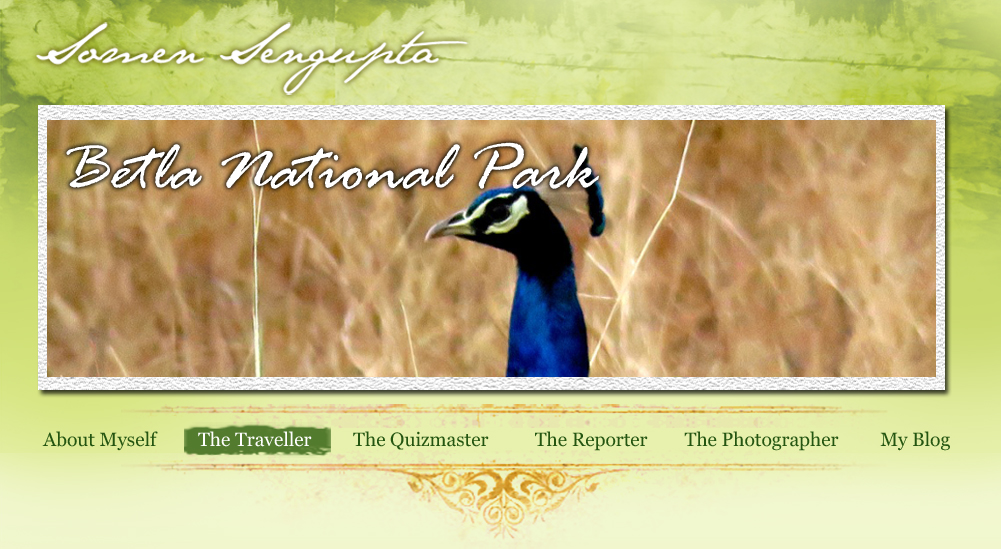| BETLA NATIONAL PARK – THE JUNGLE GRACEFUL |
|
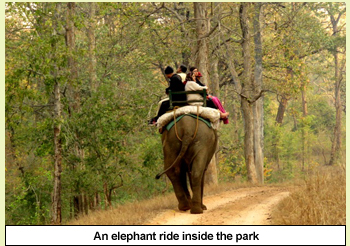 In the year 1932 world was witnessing several bone chilling events and some of those were just like milestonesin civilization of mankind. In England one of the best selling crime thriller of the century Peril at End House by Agatha Christie was hitting the store like wildfire, whereas in Germany Hitler was running an unsuccessful presidential campaign. In Asia Japan was bombing on China’s Shanghai and in America automobile giant Ford had just introduced it’s smash hit model ‘Y’.
In the year 1932 world was witnessing several bone chilling events and some of those were just like milestonesin civilization of mankind. In England one of the best selling crime thriller of the century Peril at End House by Agatha Christie was hitting the store like wildfire, whereas in Germany Hitler was running an unsuccessful presidential campaign. In Asia Japan was bombing on China’s Shanghai and in America automobile giant Ford had just introduced it’s smash hit model ‘Y’.
When world was high on such epoch making milestones, a British forest officer in deep jungle of Chotanagpur plateau of Bihar (now in Jharkhand ) was carving his own foot print in the landscape of history. The man J.W Nicholson was a senior forest officer in British era and the job that he was doing there had no match with any other forests of the world. He was trying to do a census of ‘tigers’ with help of their pugmarks in a deep jungle of Chotanagpur, a job no one has done before for this wonderful creature named tiger. It was for the first time in the world that human concern for protecting and preserving tiger was expressed in form of an organised Govt funded project. The forest where it actually happened was Palamau Tiger Reserve that became famous overnight. The dense forest of Chotanagpur plateau houses one of the most beautiful hill station of Bihar now in Jharkhand. Known as Netarhat, the jungle surrounded hill station has its magical appeal.
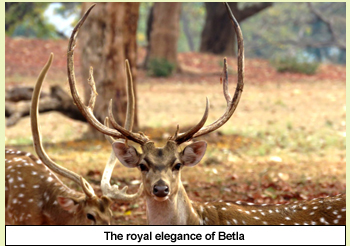 However nothing about this region will be revealed if Palamau Tiger reserve and its one of the most important part known as Betla National Park is not felt by visiting it. The word Palamau came by joining three words which are indispensable part of this geography. In the word Palamau ‘Pa’ came from palash flower which is officially known as Butea monospermas, the red orchid type flower that blooms all around the area in spring. The word ‘Lah’ means sealing wax a natural product available in the forest. The word ‘Mau’ came from Mahua officially known as Madhuca indica a n atural addictive drink that makes both elephants and bison mad in jungle. Needless to say men are more addictive than beasts when it comes to spirit made out of Mahua. However nothing about this region will be revealed if Palamau Tiger reserve and its one of the most important part known as Betla National Park is not felt by visiting it. The word Palamau came by joining three words which are indispensable part of this geography. In the word Palamau ‘Pa’ came from palash flower which is officially known as Butea monospermas, the red orchid type flower that blooms all around the area in spring. The word ‘Lah’ means sealing wax a natural product available in the forest. The word ‘Mau’ came from Mahua officially known as Madhuca indica a n atural addictive drink that makes both elephants and bison mad in jungle. Needless to say men are more addictive than beasts when it comes to spirit made out of Mahua.
No one can discount a jungle if that is a home for almost all common and uncommon creatures and in that way Palamau is extraordinary. Its history and biodiversity both are equally interesting and gripping. Spread in three districts of Jharkhand viz Latehar, Lohardanga and Garhwa, the 1129 sq km of woodlands and grazing land with several water bodies in its topography Palamau Tiger Reserve is exceptionally rich in its biodiversity. It looks majestic in every context. Three small yet beautiful rivers viz Koel, Burah and Auranga flow inside the project area. In the dense wood of unknown trees sunlight plays hide and seek with shadow.
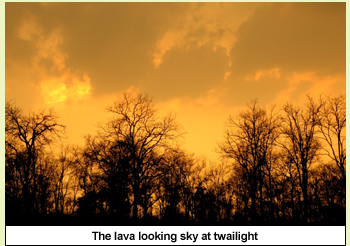 It is a common roaming field of all kind of life threatening beasts. So earlier one gets inside the forest, higher is the chance of sighting mind blowing wildlife. Out of that 1129 sq km, nearly 980 sq km is demarked as Palamau wildlife sanctuary and Betla National Park is carved out with 226 sq km. So Betla National Park is a small part of huge tiger reserve named Palamau. Tourism is encouraged from Betla NP. The word Betla is again formed with touch of various animals who are part of this jungle and one of our biggest support in Eco-system. The first alphabets of bison, elephant, tiger, leopard and antelopes are taken together to form the word BETLA. Inside Betla National Park one is in danger if he is not alert every moment. The very ordinary entrance of Betla gives very little idea about its biorichness and wildlife. No wonder that the home of 47 species of mammals and 174 species of birds is pregnant with anything that is thrilling as an experience but may turn fatal if not handled with care.
The non core area can be scaled in an elephant safari or a jeep safari. However here jeeps are not open like other forests. The covered jeep creates an obstacle in 360 degree visibility both for a visitor and the photographer. One can capture a satisfactory witnessing of an animal only if it comes on his side. This is a challenge in Betla jeep safari. Still jeep safari is best in Betla and its access is much deeper in the jungle than elephant. The crisscross beaten track taken by the jeep often forces to stop in shadow to allow the hoard of elephants to pass the road and let them mix in dense bush. There is a water body where almost every day some group of elephants come to drink. Spotting elephants is a common event in Betla though in summer they are rare. Some pockets of the forest is so densely populated with elephants that sometimes a safari jeep needs to stand hours to get a It is a common roaming field of all kind of life threatening beasts. So earlier one gets inside the forest, higher is the chance of sighting mind blowing wildlife. Out of that 1129 sq km, nearly 980 sq km is demarked as Palamau wildlife sanctuary and Betla National Park is carved out with 226 sq km. So Betla National Park is a small part of huge tiger reserve named Palamau. Tourism is encouraged from Betla NP. The word Betla is again formed with touch of various animals who are part of this jungle and one of our biggest support in Eco-system. The first alphabets of bison, elephant, tiger, leopard and antelopes are taken together to form the word BETLA. Inside Betla National Park one is in danger if he is not alert every moment. The very ordinary entrance of Betla gives very little idea about its biorichness and wildlife. No wonder that the home of 47 species of mammals and 174 species of birds is pregnant with anything that is thrilling as an experience but may turn fatal if not handled with care.
The non core area can be scaled in an elephant safari or a jeep safari. However here jeeps are not open like other forests. The covered jeep creates an obstacle in 360 degree visibility both for a visitor and the photographer. One can capture a satisfactory witnessing of an animal only if it comes on his side. This is a challenge in Betla jeep safari. Still jeep safari is best in Betla and its access is much deeper in the jungle than elephant. The crisscross beaten track taken by the jeep often forces to stop in shadow to allow the hoard of elephants to pass the road and let them mix in dense bush. There is a water body where almost every day some group of elephants come to drink. Spotting elephants is a common event in Betla though in summer they are rare. Some pockets of the forest is so densely populated with elephants that sometimes a safari jeep needs to stand hours to get a 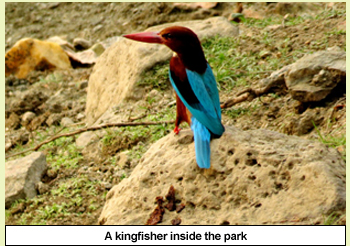 clear pass away. There is no choice in this jungle. You need to be the most obedient to nature and need to be best behaved in front of those creatures in whose home you have just stepped in. clear pass away. There is no choice in this jungle. You need to be the most obedient to nature and need to be best behaved in front of those creatures in whose home you have just stepped in.
The list of avifaunal diversity of Betla runs 169 in numbers and out of that few are endangered. So one who knows the subject can realise the importance of Betla NP. Apart from tiger, bison and elephants other major mammals commonly spotted in Betla are wild boar, sloth bear, nilgai, Indian wolf, fox, jackal, Indian wolf, small Indian civet etc are also found. Golden coloured common Indian Langur in large family is often found in tree tops where as on ground pangolins, four horned antelopes often appears from bush and vegetation. The roads inside the park look like a hand painted picture where grass land and woodlands are blended in most charming way. Several parts of the forest is full of shegun, saal trees and bamboo groves. The waved roads though motorable enough often meet at bumps.
The most frequently seen animal here is Sambar deer officially known as Rusa Unicolour.. They are almost everywhere forming groups with few stags and great number of females and fawn. Full grown stags that throws a watchful eyes to the visitors looks majestic with their long bent horn and golden brown spotted skin colour that shines like fire in late afternoon. These sambars are also used as prey for leopard who are nearly 29 in numbers and often visible inside the park and sometimes in 130 villages that have encroached the forest land. For 30000 human and more than 1.5 lakhs of cattle around Betla NP lesson of coexisting with leopard and elephants are normal. Before summer when trees are full of mahua hoards of elephants come out of the forest to drink that causing considerable damage to crops and property.
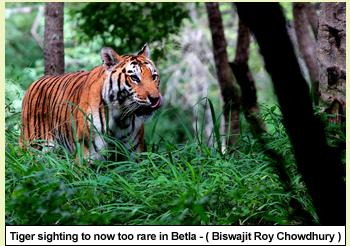 Needless to say man - animal conflicts around Betla is now rising sharply. The pride of Betla is Indian bison also called gaur. Bison in Betla is its trade mark. The huge and deadly beast is too strong and any wrong gesture with these animals can invite death. Bisons live in social format and too protective of their calf. Though they do not attack but a too close proximity specially to a g r o u p w h e r e c a l v e s are there may provoke an a b n o r m a l aggression. So if it is bison in Betla it is always better to keep a safe distance to photograph them. Too close a presence may turn deadly here. Very commonly seen birds in Betla are peacocks, kingfishers, hornbill, red jungle fowl, forest owlets, and eagles.Out of all colourful kingfishers are very easily spotted. Like every forest of India wildlife of Betla could not escape from brutal claws of poachers who were once very active here. However it is not only poaching that gradually finishing rich wild life of Betla. Needless to say man - animal conflicts around Betla is now rising sharply. The pride of Betla is Indian bison also called gaur. Bison in Betla is its trade mark. The huge and deadly beast is too strong and any wrong gesture with these animals can invite death. Bisons live in social format and too protective of their calf. Though they do not attack but a too close proximity specially to a g r o u p w h e r e c a l v e s are there may provoke an a b n o r m a l aggression. So if it is bison in Betla it is always better to keep a safe distance to photograph them. Too close a presence may turn deadly here. Very commonly seen birds in Betla are peacocks, kingfishers, hornbill, red jungle fowl, forest owlets, and eagles.Out of all colourful kingfishers are very easily spotted. Like every forest of India wildlife of Betla could not escape from brutal claws of poachers who were once very active here. However it is not only poaching that gradually finishing rich wild life of Betla.
Another reason of this gradual decline in number of tiger and elephants in Betla is the railway track that runs inside the jungle. There are almost 70 trains that pass through thisforestthus making life difficultfor elephants and tiger. Speeding cars and cargo vehicle on Natinal Highway kill more than 2000 animals per year. Exposed electrical cable is almost everywhere in Betla. This often kills elephants by electrocution.
Till 2012 various pockets of Betla were free roaming zone of Maoist and to encounter them 8 police camps were set up in and around the forest. The frequent exchange of fire did huge damage to wildlife from which Betla will never recover. However now it is believed that the forest is free of Maoists.
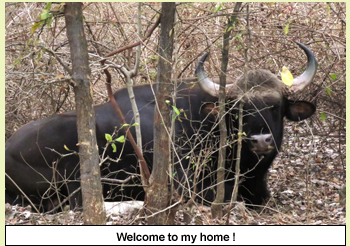 Tiger population of Betla national park often looks perplexing. Though Betla is one of the founding partner of Project Tiger initiatives instituted in 1973, the number that it shows today cuts a very sorry figure. The last tiger seen in Betla almost after a gap of 2 years was on 22nd February 2017. It was a full grown male that never reappeared after that. Surprisingly the tiger population of Palamau had done well in first initial days. In 1973 when Indira Gandhi Govt announced Project Tiger it had 22 tigers. In 1995 the population was reported as 71 and after that a sad story was unfolded. Many Govt documents still claim that there are 30 tigers where as recent study in 2014 which was carefully kept well guarded says it is hardly 3. This is just cont r a s t with all other tiger projects in India where in last 25 years tiger population has increased by a handsome percentage. The way tiger sighting is reducing in Betla and over all Palamau Tiger Reserve it seems that the majestic beast is brink of extinction. If it really happens that will be a black day for India because when no one in world ever thought to preserve tiger, then here in Palamau the revolution begun. Today the same forest is almost tigerless thanks to human lust and lack of awareness. The issue is grave and there is little chance that things will change so fast. Tiger population of Betla national park often looks perplexing. Though Betla is one of the founding partner of Project Tiger initiatives instituted in 1973, the number that it shows today cuts a very sorry figure. The last tiger seen in Betla almost after a gap of 2 years was on 22nd February 2017. It was a full grown male that never reappeared after that. Surprisingly the tiger population of Palamau had done well in first initial days. In 1973 when Indira Gandhi Govt announced Project Tiger it had 22 tigers. In 1995 the population was reported as 71 and after that a sad story was unfolded. Many Govt documents still claim that there are 30 tigers where as recent study in 2014 which was carefully kept well guarded says it is hardly 3. This is just cont r a s t with all other tiger projects in India where in last 25 years tiger population has increased by a handsome percentage. The way tiger sighting is reducing in Betla and over all Palamau Tiger Reserve it seems that the majestic beast is brink of extinction. If it really happens that will be a black day for India because when no one in world ever thought to preserve tiger, then here in Palamau the revolution begun. Today the same forest is almost tigerless thanks to human lust and lack of awareness. The issue is grave and there is little chance that things will change so fast.
The picture of tiger population of Betla or Palamau Tiger Reserve as a whole clearly shows that tiger is the vanishing from Jharkhand and it will soon make Jharkhand uncrowned of its wild life glory.
■ Travel Logistics :
Betla National Park is just 25 km from Daltonganj which is connected by rail from Patna and Calcutta.
Ranchi is just 170 km from Betla NP. Betla is connected by road from Ranchi - it is a drive of 175 kms.
Park remains open only between 1st October to 30th June. Camera has separate charge - no charge for mobile camera.
Elephant ride is booked from entry gate - presently only one elephant is working. Few more are imported from Hydrabad. They are under training.
Best place to stay is tourist guest house of Jharkhand Tourism named " Vanashree " - you can do on line booking www.jharkhandtourism.org
An hour’s jeep safari with guide costs Rs 500 plus. Betla National Park The jungle graceful
This article was published in The Hitavada on 2nd September 2018
Click here to view the original article
|
